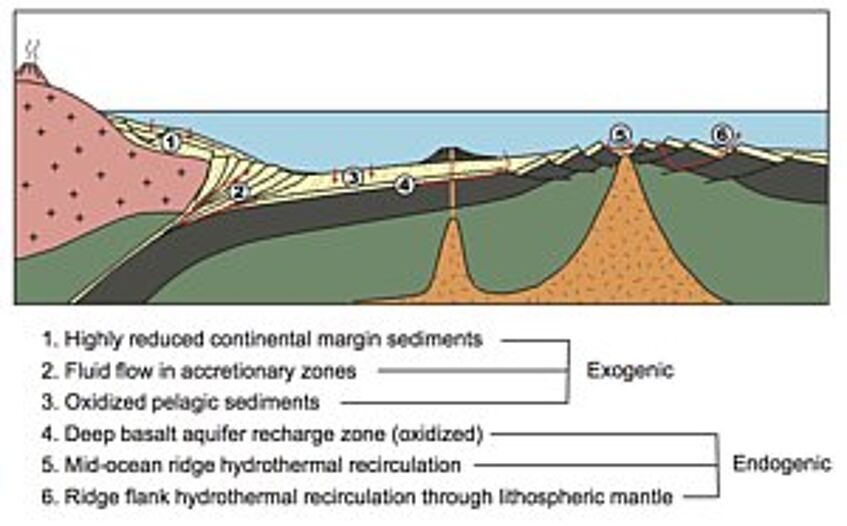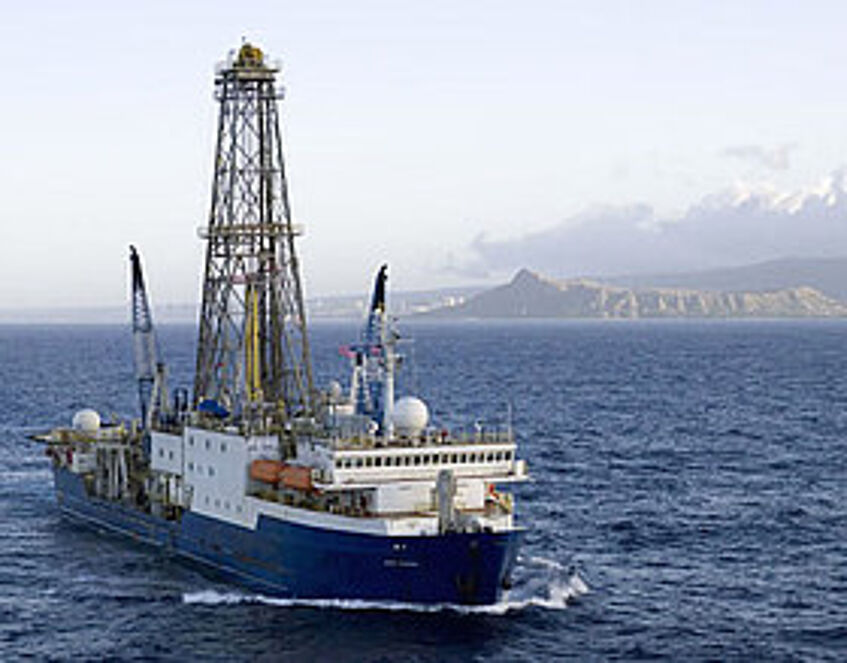Diagenetic imprints in marine sediments as signatures of a dynamic deep biosphere
Deep-sea sediments have been shown to harbour microbes capable of mediating biogeochemical reactions, such as sulphate reduction, that would otherwise not occur under Earth surface conditions. Through these processes, microbes strongly affect material and energy fluxes between Earth surface and subsurface.

Different regions in the sub-seafloor where microbes can grow and gain energy either derived from sunlight (exogenic) or from Earth‘s interior (endogenic) (Meister, 2015)
Diagenetic carbonate (dolomite) layers are commonly formed due to the production of HCO3- from the anaerobic oxidation of methane by microbial consortia. Such dolomite layers were recovered from the Peru Margin by Ocean Drilling. Strongly varying carbon isotope compositions in the dolomite reveal that the deep biosphere activity changed over geological time. In fact, the time needed for the changes to manifest, coincide with glacial interglacial timescales. The deep biosphere has thus co-evolved with conditions in the ocean and atmosphere throughout Earth‘s history.

Schematic drawing of how a geochemical signature in diagenetic imprints can document past subsurface processes (Meister, 2015)

(© International Ocean Discovery Program)
Dynamic changes in deep biosphere activity are simulated with numerical models. The influence of silicate alteration is modelled as part of a current Master Thesis by Gerhard Herda.
